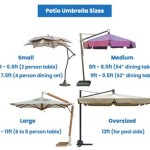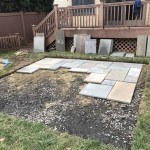Patio Drip Irrigation System: A Comprehensive Guide
A patio drip irrigation system offers a targeted and efficient method for watering container plants and raised garden beds on patios, balconies, and other limited outdoor spaces. This system delivers water directly to the plant's root zone, minimizing water waste and promoting healthy plant growth. Understanding the components, installation process, and maintenance requirements of a patio drip irrigation system is crucial for its successful implementation and long-term performance.
Benefits of Implementing a Patio Drip Irrigation System
The adoption of a patio drip irrigation system presents numerous advantages over traditional watering methods, such as hand watering or sprinkler systems. The primary benefit is water conservation. By delivering water directly to the plant roots, the system minimizes water loss due to evaporation, runoff, and overspray. This targeted approach ensures that the plant receives the necessary hydration without wasting water on surrounding areas.
Another significant benefit is the promotion of healthy plant growth. Consistent and precise watering prevents the fluctuations in soil moisture that can stress plants. Drip irrigation helps maintain optimal soil moisture levels, leading to healthier root systems, increased nutrient uptake, and improved overall plant vigor. Furthermore, the reduction of leaf wetness minimizes the risk of fungal diseases, which often thrive in moist environments. A drip irrigation system delivers water to the soil, keeping foliage dry and reducing the likelihood of disease outbreaks.
Finally, a patio drip irrigation system offers convenience and time savings. Automating the watering process eliminates the need for manual watering, freeing up time for other gardening tasks or leisure activities. The system can be programmed to water plants on a schedule, ensuring consistent hydration even when the homeowner is away. This automation is particularly beneficial for individuals with busy schedules or those who travel frequently.
Components of a Patio Drip Irrigation System
A patio drip irrigation system comprises several essential components, each serving a specific function in the delivery of water to the plants. The main components include a water source connection, a backflow preventer, a pressure regulator, a filter, main tubing, lateral lines, emitters, and fittings.
The water source connection is the point where the irrigation system connects to the main water supply. This connection typically involves a hose bib or faucet adapter. A backflow preventer is a crucial safety device that prevents water from flowing back into the main water supply, protecting it from contamination. This is often a required component by local water authorities.
The pressure regulator reduces the water pressure from the main supply to a level suitable for the drip irrigation system. Drip emitters operate effectively within a specific pressure range, and exceeding this range can lead to damage or inconsistent water delivery. A filter removes debris and particulate matter from the water, preventing clogging of the emitters. This is especially important if the water source contains sediment or minerals.
Main tubing, typically made of polyethylene, is the primary conduit for water distribution in the system. It runs from the water source connection to the planting area. Lateral lines, also made of polyethylene tubing, branch off from the main tubing and extend to individual plants or containers. Emitters are the devices that release water directly to the plant's root zone. They come in various flow rates, allowing for customized watering based on the plant's needs.
Fittings, such as connectors, elbows, and tees, are used to join the various components of the system together. These fittings ensure a secure and leak-proof connection, preventing water loss and maintaining system efficiency.
Installation Process of a Patio Drip Irrigation System
Installing a patio drip irrigation system requires careful planning and execution. Prior to commencing the installation, it is essential to assess the layout of the patio or balcony, considering the number and placement of plants, as well as the location of the water source. This assessment will inform the design of the system and the selection of appropriate components. A diagram of the layout, including the position of the main tubing, lateral lines, and emitters, is recommended for a smooth installation.
The first step in the installation process is to connect the water source to the system. This involves attaching a hose bib adapter or faucet adapter to the water source, followed by the backflow preventer, pressure regulator, and filter. These components should be installed in the correct order to ensure proper system operation and protection of the water supply.
Next, the main tubing is laid out along the patio or balcony, following the planned route. The tubing can be secured to the ground or furniture using clips or stakes to prevent it from moving. Lateral lines are then connected to the main tubing using appropriate fittings. The length and placement of the lateral lines should be determined by the location of the plants.
Emitters are inserted into the lateral lines near the base of each plant. The flow rate of the emitters should be selected based on the plant's water requirements. Plants with higher water needs will require emitters with a higher flow rate, while plants with lower water needs will require emitters with a lower flow rate. Adjustable emitters offer flexibility in fine-tuning the water delivery to individual plants.
Once all the components are connected, the system should be tested to ensure proper operation. Turn on the water supply and check for leaks at all connections. Adjust the emitters as needed to provide the correct amount of water to each plant. The system can be further customized by adding a timer or controller, which automates the watering schedule.
Maintenance and Troubleshooting of a Patio Drip Irrigation System
Regular maintenance is essential for ensuring the long-term performance and efficiency of a patio drip irrigation system. Periodic inspection of the system is crucial for identifying and addressing potential problems. The components should be visually inspected for leaks, cracks, or damage. The emitters should be checked to ensure they are functioning properly and are not clogged. A clogged emitter will restrict or prevent water flow, potentially depriving the plant of adequate hydration.
Cleaning the filter regularly is important for preventing clogging of the emitters. The frequency of cleaning will depend on the quality of the water source. If the water contains a lot of sediment or minerals, the filter may need to be cleaned more frequently. The filter can be cleaned by removing it from the system and rinsing it with water.
Flushing the system periodically can help remove any accumulated debris from the tubing and emitters. This can be done by disconnecting the end of the main tubing and allowing water to flow through the system for a few minutes. The pressure regulator should be checked periodically to ensure it is maintaining the correct pressure. Adjustments may be necessary to maintain the desired pressure level.
Troubleshooting common issues is also a key aspect of maintaining a patio drip irrigation system. If plants are not receiving enough water, the emitters may be clogged, the pressure may be too low, or the water supply may be insufficient. Clogged emitters can be cleaned or replaced. The pressure can be adjusted by adjusting the pressure regulator. If the water supply is insufficient, the system may need to be connected to a higher-capacity water source.
If there are leaks in the system, the connections may be loose or the tubing may be damaged. Loose connections can be tightened, and damaged tubing can be replaced. Proper winterization is crucial in areas with freezing temperatures. Before the first freeze, the system should be drained of water to prevent damage to the components. This can be done by disconnecting the water source and opening the ends of the tubing to allow the water to drain out. The components should be stored in a protected area during the winter months.
Consider these aspects for prolonged performance. Following these maintenance guidelines will ensure that the patio drip irrigation system operates efficiently and effectively for years to come, providing consistent and reliable watering for container plants and raised garden beds.

Dig Patio Drip Irrigation Kit Fm01as The Home Depot

Dig Patio Drip Irrigation Kit Fm01as The Home Depot

Patio Hanging Baskets Drip Irrigation Kit Dig Corporation

Dig Patio Drip Irrigation Kit Fm01as The Home Depot

Singes 152pcs Garden Drip Irrigation Kit System Automatic Patio Plant Watering For Greenhouse Lawn Agriculture Com

Dig Drip Patio Watering Kit Fm01as

Watering System For Balconies And Patios Evehome Com

226ft Greenhouse Micro Drip Irrigation Kit Automatic Patio Misting Plant Watering System With 1 4 Inch 2 Blank Distribution Tubing Hose Adjustable Nozzle Emitters Sprinkler Barbed Fittings Jork Com

Garden Patio Water Mister Drip Irrigation Air Gardennaire

Using Drip Irrigation To Water Your Container Plants
Related Posts








